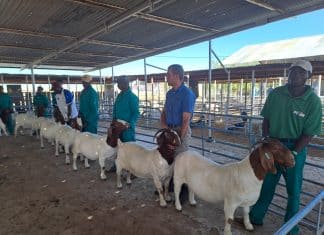Estimated reading time: 6 minutes
- As the effects of climate change become progressively pronounced, the need to shift towards sustainable and green practices is proving even more crucial.
- Given that fossil fuel-driven activities make the largest contribution to greenhouse gas emissions, green energy production is at the forefront of sustainable development efforts.
- At present, the South African renewable energy space is dominated by solar energy, largely because the country receives abundant solar radiation, and the technology has become more affordable over the years.
- As a renewable energy source, biogas is produced through anaerobic digestion of organic matter. The resulting gas can be used directly for heating purposes or upgraded to produce electricity and fuel.
- As part of information dissemination and international collaboration, the Danish Trade Council co-ordinated a study tour to Denmark in September 2023. Delegates from South African organisations that are in the biogas space participated in the tour.
As the effects of climate change become progressively pronounced, the need to shift towards sustainable and green practices is proving even more crucial. Given that fossil fuel-driven activities make the largest contribution to greenhouse gas emissions, green energy production is at the forefront of sustainable development efforts.
This is all the more true in the South African context since the country is affected by energy supply challenges. At present, the South African renewable energy space is dominated by solar energy, largely because the country receives abundant solar radiation, and the technology has become more affordable over the years. However, although it is still in its infancy in South Africa, biogas is a promising bioenergy that could contribute significantly to the renewable energy sector.
Any organic material can be used as feedstock for biogas digesters, including fresh animal manure, crop residue, organic food waste and other organic waste.
Biogas as green solution
As a renewable energy source, biogas is produced through anaerobic digestion of organic matter. The resulting gas can be used directly for heating purposes or upgraded to produce electricity and fuel. Biogas digesters range in scale from household level to industrial-sized plants. Biogas has a dual advantage in that it not only produces clean energy but can utilise waste material to do so. Any organic material can be used as feedstock for biogas digesters, including fresh animal manure, crop residue, organic food waste and other organic waste. Feedstock can also be combined in varying proportions.
Another advantage of biogas digesters is location diversity. In rural areas, especially farms, organic remains from farming activities, organic waste from agro-processing, and animal manure can be used as feedstock. In urban areas, feedstock can come from domestic, restaurant and supermarket organic waste and other organic waste from industrial processes. This means that large-scale biogas production can considerably reduce the amount of organic matter that ends up at landfills in urban areas.
This is in line with the global shift towards circular economies. The circular economy model promotes using what is traditionally viewed as waste from processes as resources for other processes. The results of the circular economy model are reduced reliance on raw natural resources and reduced waste generation.
Find practical ways to navigate the energy crisis here.
Biogas production in Denmark
Denmark has established itself as a global leader in promoting green technological advances that drive the shift towards a circular economy. Biogas plays a significant role in the country’s green technology endeavours. It serves as a renewable energy source and a vital means to manage agricultural and organic waste. The biogas produced by large-scale plants is fed into the national gas grid and is used within Denmark for heating, manufacturing processes and power plants.
Denmark also exports some of the natural gas it produces. The digestate that is produced as a by-product is used by producers to fertilise their fields. The digestate has a higher nutrient content and reduced odour compared to using raw animal manure. To ensure economic feasibility, the biogas plants are located in agricultural regions close to the existing natural gas pipeline.
The circular economy model promotes using what is traditionally viewed as waste from processes as resources for other processes.
This ensures that producers supply the biogas plants with feedstock and are able to collect the digestate in a financially viable manner. The success of the Danish biogas model is largely driven by the country’s supporting policies and regulations which aim to reduce agricultural and organic waste.
Read more about Alternative energy in the agricultural landscape.
A study tour to Denmark
As part of information dissemination and international collaboration, the Danish Trade Council co-ordinated a study tour to Denmark in September 2023. Delegates from South African organisations that are in the biogas space participated in the tour.

The purpose of the study tour was to expose delegates to the innovations and policies that are crucial to the development and operation of large-scale biogas digesters. On the first day of the tour, as an introduction to the biogas sphere, the team visited the Danish Biogas Industry Association. During the visit, biogas-related policies and regulations, industry developments and market drivers, and organic material recycling in Denmark were discussed. Thereafter, an organic waste treatment plant and a wastewater treatment plant were visited.
The second day comprised visits to leading biogas companies that provided insight into the technical aspects of biogas production. The team then visited a farm-based biogas plant at the Grasten Agricultural College. The digester converts cow and pig manure to energy that is used on campus.

On the third day, the team visited Aarhus University where the university’s research and development biogas plant were demonstrated. Afterwards, the team had a site visit to another farm-based biogas plant which produces energy for a nearby dairy plant. On the last day of the tour, the team had a wrap-up session during which key takeaways, knowledge gaps and the future of biogas in South Africa and Denmark were reviewed.
The study tour was an informative experience for the South African delegates as it provided practical insight into the technical, political and social aspects of biogas production from experts in the field. Access to such expertise is vital to accelerate the growth of the South African biogas market.
Read more about alternative energy solutions here.
Biogas in South Africa
The development of the biogas market in South Africa is championed by the Southern African Biogas Industry Association (SABIA). SABIA was established in 2013 and it serves to advance the establishment of a thriving and sustainable biogas industry in the country.
The association offers membership to all biogas-affiliated stakeholders ranging from students, individuals, small or medium enterprises, corporate companies, government and non-government organisations, and academic institutions. SABIA offers stakeholders access to sector information through newsletters, webinars and conferences. Members also get the opportunity to network with experts in the biogas sector.
Biogas as an energy source is a very relevant solution to modern energy supply challenges in South Africa. Biogas production can be used to achieve multiple sustainable development goals as it addresses renewable energy production, organic waste reduction, job creation and skills development.
For enquiries, send an email to Zikhona Buyeye at buyeyez@arc.agric.za.






